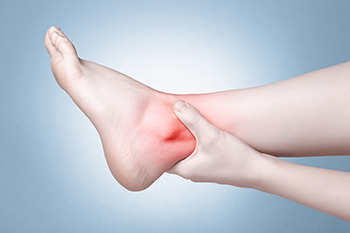
Corns and calluses result from too much pressure on an area of the foot. Though they can occur in anyone, athletes are more prone to get them because the pressure on their feet is higher. Reasons for the development of corns and calluses can come from shoes if a deformity, such as bunion or hammertoe is present and rubs against the shoes. If the pressure is higher under the ball of the foot, it may be due to a prominent metatarsal head. Thickened skin of a corn or callus can be removed and provide relief from pain, but the only way to get rid of these symptoms permanently or prevent them from coming back is to remove what caused them in the first place. For example, if a corn develops from a hammertoe, fixing the hammertoe will get rid of the pressure and the corn will not come back. If you suffer from corns or calluses, see a podiatrist for help in figuring out what to do to remove the cause so these are no longer a problem for you.
Sports related foot and ankle injuries require proper treatment before players can go back to their regular routines. For more information, contact one of our podiatrists of InStride Family Foot Care. Our doctors can provide the care you need to keep you pain-free and on your feet.
Sports Related Foot and Ankle Injuries
Foot and ankle injuries are a common occurrence when it comes to athletes of any sport. While many athletes dismiss the initial aches and pains, the truth is that ignoring potential foot and ankle injuries can lead to serious problems. As athletes continue to place pressure and strain the area further, a mild injury can turn into something as serious as a rupture and may lead to a permanent disability. There are many factors that contribute to sports related foot and ankle injuries, which include failure to warm up properly, not providing support or wearing bad footwear. Common injuries and conditions athletes face, including:
- Plantar Fasciitis
- Plantar Fasciosis
- Achilles Tendinitis
- Achilles Tendon Rupture
- Ankle Sprains
Sports related injuries are commonly treated using the RICE method. This includes rest, applying ice to the injured area, compression and elevating the ankle. More serious sprains and injuries may require surgery, which could include arthroscopic and reconstructive surgery. Rehabilitation and therapy may also be required in order to get any recovering athlete to become fully functional again. Any unusual aches and pains an athlete sustains must be evaluated by a licensed, reputable medical professional.
If you have any questions please feel free to contact our offices located in Concord, Charlotte, and Salisbury, NC . We offer the newest diagnostic and treatment technologies for all your foot and ankle needs.





